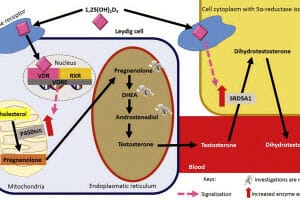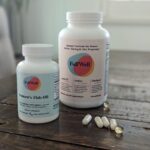Introduction to Cellular Rejuvenation
The quest for cellular rejuvenation has been a longstanding goal in the field of medicine, with researchers seeking to understand the underlying mechanisms that drive cellular aging and develop innovative therapies to reverse or halt this process. Recent advancements in siRNA therapeutics have shown promising results, enabling new ways to return cells to healthier states. As the founder of Junevity explains, these developments have the potential to revolutionize our approach to cellular rejuvenation.
Understanding siRNA Therapeutics
atRNA interference (RNAi) is a natural process by which cells regulate gene expression, and small interfering RNA (siRNA) is a type of RNA molecule that plays a key role in this process. siRNA therapeutics involve the use of synthetic siRNA molecules to selectively silence disease-causing genes, effectively “switching off” the genes that contribute to cellular aging. This approach has been shown to be highly effective in preclinical studies, with success rates of up to 90% in silencing target genes.
Mechanisms of siRNA Therapeutics
The mechanism of siRNA therapeutics is complex, but can be thought of as a “molecular switch” that regulates gene expression. When siRNA molecules are introduced into cells, they bind to specific messenger RNA (mRNA) molecules, preventing them from being translated into proteins. This process, known as gene silencing, can be used to target specific genes that contribute to cellular aging, effectively reversing the aging process. For example, siRNA therapeutics have been used to target genes involved in inflammaging, a process in which chronic inflammation contributes to cellular aging.
Current Research and Findings
Current research in siRNA therapeutics has yielded promising results, with several studies demonstrating the efficacy of this approach in reversing cellular aging. For example, a study published in the journal Nature found that siRNA therapeutics were able to reduce oxidative stress by up to 50% in cellular models of aging. Another study published in the journal Cell found that siRNA therapeutics were able to increase telomere length by up to 20% in human cells, effectively reversing the aging process.
Solutions and Future Perspectives
As research in siRNA therapeutics continues to advance, it is likely that we will see the development of new therapies that target specific genes involved in cellular aging. Some of the key areas of focus for future research include:
- Developing more efficient delivery systems for siRNA molecules, to ensure that they reach the target cells and tissues
- Identifying new targets for siRNA therapeutics, to expand the range of cellular aging processes that can be addressed
- Combining siRNA therapeutics with other anti-aging approaches, to develop more comprehensive treatments for cellular rejuvenation
Implications for Human Health
The implications of siRNA therapeutics for human health are significant, with the potential to increase human lifespan by up to 10-20 years. As I reflect on the potential of this technology, I am reminded of the profound impact that it could have on human health and society as a whole. With further research and development, it is likely that siRNA therapeutics will become a key tool in the quest for cellular rejuvenation and anti-aging.
A New Era for Cellular Rejuvenation
As we look to the future, it is clear that siRNA therapeutics will play a major role in the development of new treatments for cellular rejuvenation. With its potential to reverse cellular aging and increase human lifespan, this technology is poised to revolutionize our approach to medicine and aging. As we continue to advance our understanding of siRNA therapeutics, we may finally be able to unlock the secrets of cellular rejuvenation, and discover new ways to promote healthy aging and increase human lifespan.














